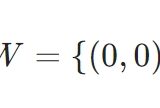どうも、木村(@kimu3_slime)です。
今回は、金利計算の単純化において、テイラー展開が役に立つという話を紹介します。
Persian merchants use a formula for approximating loan payments that only seems to make sense if you know calculus.
And yet, the Persian folk formula seems to predate the discovery of the ideas from calculus that are needed to understand it. pic.twitter.com/J4oR2ONBpG
— Kareem Carr (@kareem_carr) May 23, 2022
利子を考えた借金の月々の支払額の公式として、
\[C= \frac{r(1+r)^N P}{(1+r)^N -1}\]
という公式が知られています。\(C\)は月々の支払い、\(r\)は月ごとの金利(利息率)、\(N\)は合計の経過月数、\(P\)は元本(最初に借りた金額)です。
この計算式は\(N\)乗を含んでいるので、昔は計算するのが大変でした。
そこでペルシア(現在はイラン)では、伝統的に次の近似式
\[C_f = \frac{1}{N}(P +\frac{1}{2} PN r)\]
が知られていました(ペルシアの公式 Persian folk formula)。
この話題を紹介した論文では、著者の祖父が19世紀のイランの商人で、この近似式は広くイランで用いられていたとしています。
I published this in a 1-pager:
P. Milanfar, “A Persian Folk Method of Figuring Interest”, Mathematics Magazine, vol. 69, no. 5, December 1996
My late dad refused to be a co-author. But when it appeared, he printed it out and framed it; and hung it on the wall of the house. pic.twitter.com/0epoMLSeEX
— Peyman ℕℝ (@docmilanfar) April 26, 2020
コンピュータを使って、この近似式の有効性を確かめてみましょう。\(r=0.1, N=12, P=100\)のとき、それぞれ
\[C \simeq 14.7\]
\[C_f \simeq 13.3\]
となり、それなりに良い近似になっていることがわかります。
現代の数学の知識、テイラー展開を使えば、この近似式を導出することができます。より正確には、
\[C \simeq \frac{1}{N}(P +\frac{1}{2} P(N+1) r)\]
です。テイラー展開による近似とペルシアの公式の違いは、第二項の係数ですが、\(\frac{N+1}{N}\)は\(N\)が大きいときには大した違いはありませんね。
一般に、テイラー展開によるべき乗の近似式として、\(x\)が十分小さいとき
\[(1+x)^\alpha \simeq 1+ \alpha x \]
と1次近似できることは有名です。
まず、\(C\)の前半部分
\[f(r):=\frac{r}{(1+r)^N -1} \]
を1次の項まで展開しましょう。導関数は
\[f^{\prime}(r) = \frac{-Nr(r+1)^{N-1}+(r+1)^N-1}{((r+1)^N-1)^2}\]
なので、テイラー展開より
\[\begin{aligned} f(0) &= \lim_{r\to 0} \frac{r}{(1+r)^N -1}\\ &=\lim_{r\to 0}\frac{r}{1+Nr-1}\\&= \frac{1}{N} \end{aligned}\]
\[\begin{aligned} f^{\prime}(0) &= \lim_{r\to 0} \frac{-Nr(r+1)^{N-1}+(r+1)^N-1}{((r+1)^N-1)^2}\\ &=\lim_{r\to 0} \frac{-Nr(1+(N-1)r)+Nr+\frac{1}{2}N(N-1)r^2}{N^2 r^2} \\ &= \lim_{r\to 0} \frac{-N(N-1)r^2+\frac{1}{2}N(N-1)r^2}{N^2 r^2} \\&= \frac{1}{2}(\frac{1}{N}-1) \end{aligned} \]
です。したがって、
\[\frac{r}{(1+r)^N -1} \simeq \frac{1}{N} +\frac{1}{2}(\frac{1}{N}-1)r\]
とテイラー展開することができます。
これらを使って計算すれば、
\[\begin{aligned} C&= \frac{r}{(1+r)^N -1} \cdot (1+r)^N P\\&\simeq (\frac{1}{N}+\frac{1}{2}(\frac{1}{N}-1)r)(1+Nr)P\\ &\simeq (\frac{1}{N}+r+\frac{1}{2}(\frac{1}{N}-1)r)P \\&= (\frac{1}{N}+\frac{1}{2}(\frac{1}{N}+1)r)P\\ &= \frac{1}{N} (P+\frac{1}{2} P(N+1)r)\end{aligned}\]
と近似式を導くことができました。
以上、金利計算の単純化において、テイラー展開が役に立つことを紹介してきました。
伝統的に知られていた近似式が、テイラー展開によって導ける精度の良い近似式であるという話は面白いですね。
木村すらいむ(@kimu3_slime)でした。ではでは。
東京大学出版会 (1980-03-31T00:00:01Z)
¥6,160 (コレクター商品)



